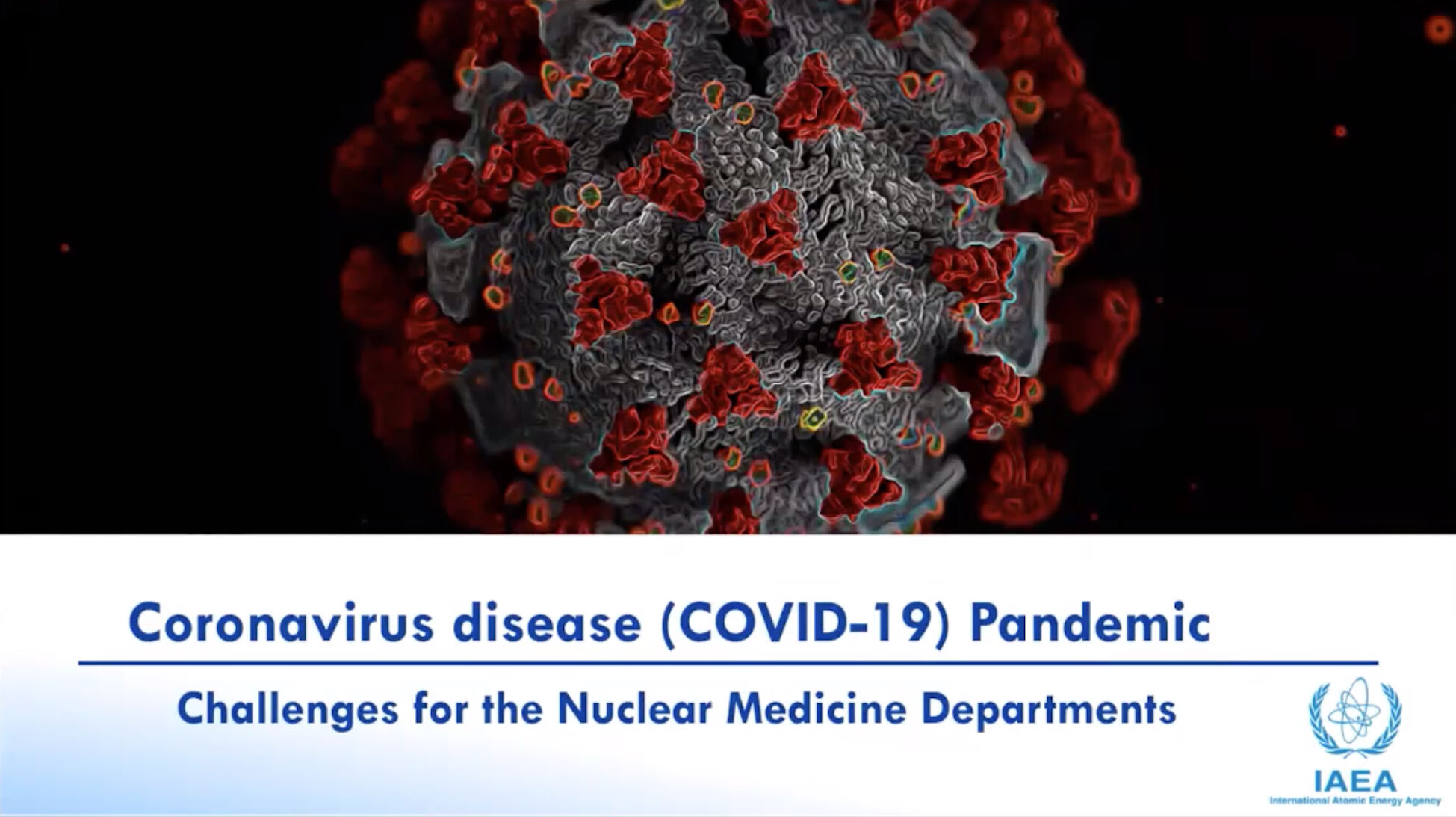Nieuwsbrieven
2025: Nieuwsbrief 2025-03 | Nieuwsbrief 2025-02 | Nieuwsbrief 2025-01
2024: Nieuwsbrief 2024-04 | Nieuwsbrief 2024-03 | Nieuwsbrief 2024-02 | Nieuwsbrief 2024-01
2023: Nieuwsbrief 2023-04 | Nieuwsbrief 2023-03 | Nieuwsbrief 2023-02 | Nieuwsbrief 2023-01
2022: Nieuwsbrief 2022-04 | Nieuwsbrief 2022-03 | Nieuwsbrief 2022-02 | Nieuwsbrief 2022-01
2021: Nieuwsbrief 2021-01
2020: Nieuwsbrief 2020-01
2019: Nieuwsbrief 2019-02 | Nieuwsbrief 2019-01
2018: Nieuwsbrief 2018-03 | Nieuwsbrief 2018-02 | Nieuwsbrief 2018-01
Nieuws
COVID-19: Nuclear Medicine and Diagnostic Imaging Section of the International Atomic Energy Agency (IAEA) starts with Covid-19 webinars
Datum: 20 | 04 | 20
COVID-19: Nuclear Medicine and Diagnostic Imaging Section of the International Atomic Energy Agency (IAEA) starts with Covid-19 webinars to help nuclear medicine and radiotherapy departments
The Nuclear Medicine and Diagnostic Imaging Section of the IAEA has started with Covid-19 related webinars to help nuclear medicine and radiotherapy departments. In these webinars numerous aspects are discussed with the participation of experts from different continents. Herewith we publish an extract of the press release:
“COVID-19 is an unfolding situation, health care providers worldwide are adapting their routine operations to minimize risks of exposure while continuing to provide the essential and critical services. This is where we are trying to help,” said Diana Paez, Head of the Nuclear Medicine and Diagnostic Imaging Section at the IAEA. “We are helping countries in different stages of COVID-19 Pandemic to adapt and learn from experience of others.”
Diagnostic imaging has a special role, as computer tomography (CT), is one of the tools used to diagnose COVID-19 associated complications in the lungs. Hospitals need to find a way to protect patients and staff while examining potentially infected patients. In addition to providing essential services to patients with cancer, cardiac and other health conditions, nuclear medicine departments could support radiology departments through the use of hybrid imaging scanners having a suitable CT component, so other CT scanner could be dedicated for COVID-19 patients, reducing the potential spread of infection.
“The information being exchanged is very helpful, there had been a lack of consistent information previously and indications coming from worldwide experts through these webinars were very useful,” said Stefano Fanti, Director of the Nuclear Medicine Division at the St. Orsola-Malpighi University Hospital in Bologna, Italy and a speaker at the first webinar targeting nuclear medicine departments on 25 March. “As there has been almost no information available, apart from an editorial, and only with a national perspective, the webinar provided a worldwide perspective.”
The kind of best practices discussed include the implementation of a robust COVID-19 screening programme for staff and patients, cleaning and disinfection of equipment and accessories, promotion of hygiene measures and the use of information technology solutions that allow multidisciplinary team meetings, staff meetings and discussions with patients to take place remotely.
The link to the IAEA press release is:
To have direct access to some webinars:
https://iaea.mediasite.com/Mediasite/Play/e0ebe841e45d48059adcde2f2f0908bc1d?autoStart=false
